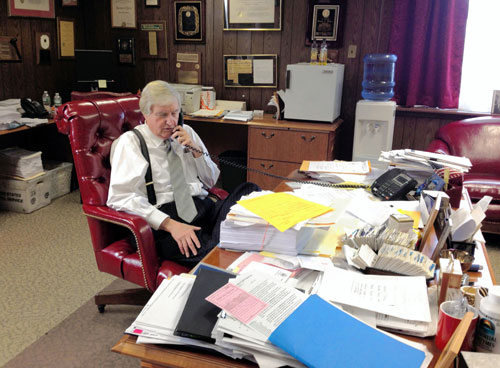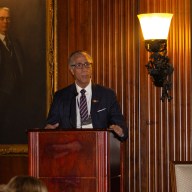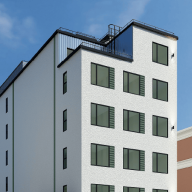It’s been nearly a year since judges have tackled the troubled Bronx County Hall of Justice, deemed the symbol of judicial ineptitude for several years.
But after a report by The New York Times exposed chronic problems within the system, Judge Douglas McKeon, the borough’s lead jurist, has cleaned house by taking a scientific approach in eliminating problems apparent even before walking into the building. Among them the long lines stretching down the block outside the busy courthouse on 161st Street where roughly 5,000 felony cases are heard yearly.
“By 9:45 a.m., typically today, there are no lines at the Hall of Justice,” said McKeon, administrative judge of the civil and criminal divisions. He took over the criminal division job in January from Judge Efrain Alvarado as the backload of criminal cases reached unprecedented numbers.
A number of factors contributed to the increase, including state budget cuts that scaled back times for day-to-day operations such as jury selections and jury trials.
With a team of judges, McKeon has studied utilizing the building’s space, “between how efficiently a building runs and the ability to process cases at the level we think is appropriate.”
He began with reducing congested lines, a main reason for delays that plagued the system. He analyzed how sporting arenas and even Dallas Fort Worth Airport “fed” people through security checkpoints, learning to double up on security personnel at each processing station to speed up screening.
“We compressed our magnetometers and x-ray machines so the distance people walk is reduced,” said McKeon. “And therefore the feeding of people into the machines is more rapid.”
McKeon noted that the number of people processed into the building by 10 a.m. has jumped from 1,100 last year to 1600 the same time this year.
“There are good and bad days,” said one employee who declined to give her name. “But it’s definitely gotten better.”
The other fix was clearing the backlog of cases that ran two years or over, a sore point for plaintiffs seeking justice and defendants seeking to prove their innocence.
McKeon sought the expertise of Brooklyn Supreme Court Justice Patricia DiMango. Since her arrival, McKeon has centralized the backlog of old cases to her courtroom, resulting in a 35% bump in jury trials, he said.
“Since January of 2013 to the present,” said McKeon, “the number of trials have gone up from the previous years.”
Still, the judge said more structural changes need to be implemented to bring the caseload down to the same level as Brooklyn and Manhattan.
He’s now looking to begin having court clerks issue ID’s to jurors so they can skip lines, and converting some elevators into expresses to take folks directly to the sixth floor where most cases are heard.
“We tried to be innovative, tried to think out of the box and we tried to do more with less,” said McKeon. “And I think the numbers support that we’re doing that.”





















